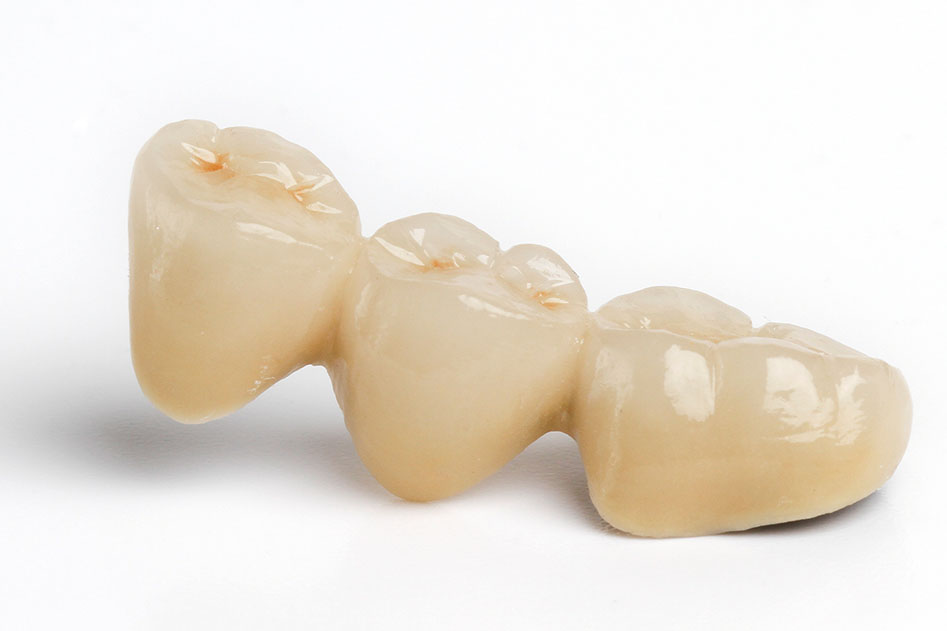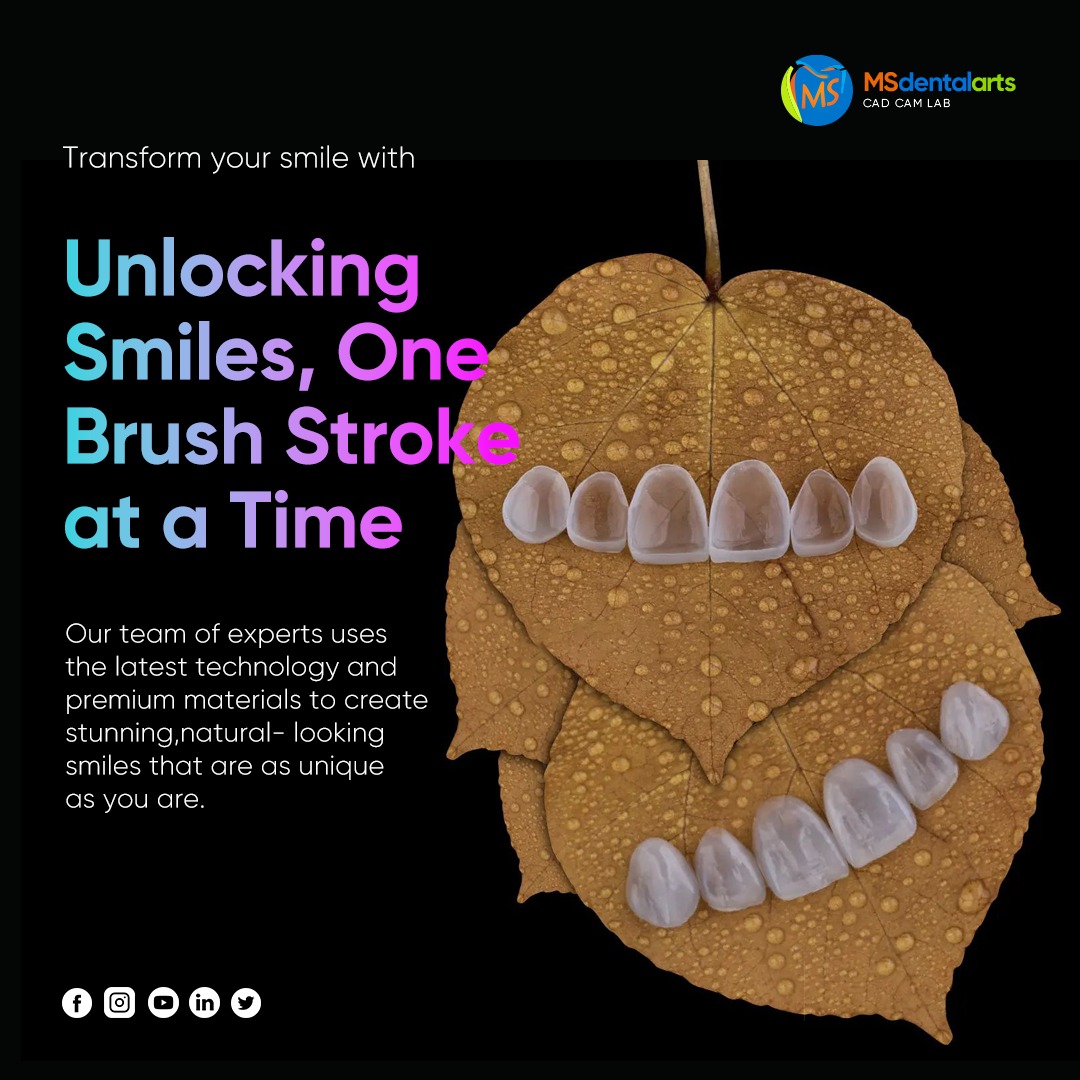Choosing the right dental crown can be overwhelming, given the myriad of options available. Zirconia crowns stand out for their strength, durability, and aesthetic appeal. Yet, it's important to recognize that not all zirconia crowns are the same.
This article will compare three leading zirconia crowns: Bruxzir, 3M, and Emax. Understanding their differences will empower you to make a choice that aligns with your dental needs and preferences.
Zirconia crowns have transformed dentistry, offering a dependable alternative to traditional porcelain-fused-to-metal (PFM) crowns and other ceramics. Their monolithic structure, a single solid piece, minimizes the risk of bond failure and porcelain chipping, ensuring reliability for long-term use.
But how do Bruxzir, 3M, and Emax zirconia crowns differ? We'll delve into the specifics of each to assist you in finding the perfect match for your dental care.
Bruxzir Zirconia Crowns

Overview and Composition
BruxZir Zirconia crowns represent a pinnacle in monolithic zirconia restoration, crafted from a singular, solid piece of zirconia material without any porcelain overlay. This unique composition is vital for their renowned durability and strength. The zirconia utilized is infused with yttria, significantly boosting their mechanical properties to align with the ISO strength recommendations for dental restorations.
These crowns are designed for excellent strength, aesthetics, and performance, making them ideal for a variety of clinical applications such as crowns, bridges, and implant restorations.
Advantages
The exceptional strength and durability of BruxZir Zirconia crowns are among their primary benefits. They have demonstrated zero terminal fractures in long-term clinical studies, underscoring their reliability for demanding restorative cases. Moreover, BruxZir crowns have evolved to offer improved translucency and color consistency, enhancing their suitability for anterior cases where a natural appearance is paramount.
Compared to other materials like IPS e.max and Ceramco 3, these crowns are also less abrasive to the enamel, which helps in preserving the health of adjacent teeth. The absence of metal in their composition significantly reduces the risk of allergic reactions and soft tissue irritation, presenting an excellent choice for patients with material sensitivities.
Additionally, the ease of preparation and cementation protocols of BruxZir crowns allow for minimal tooth reduction and offer various cementation methods, further contributing to their appeal.
Limitations
Despite the numerous advantages, BruxZir Zirconia crowns have some limitations. Their cost is higher than traditional PFM crowns, but many find the investment justified by their superior durability and aesthetic outcomes. The specific preparation requirements, including particular margin designs and minimal occlusal reduction, may necessitate more precise dental work, potentially increasing the overall cost and complexity of the procedure.
Although BruxZir Esthetic zirconia has achieved remarkable progress in lifelike translucency, it might not perfectly mimic natural teeth in every case, especially in highly aesthetic anterior restorations. However, advancements in shading technology have greatly enhanced the shade matching and consistency of these crowns.
3M Lava Zirconia Crowns

Overview and Composition
Overview and Composition
3M zirconia crowns, particularly those under the Lava and Chairside Zirconia brands, are engineered to balance strength, aesthetics, and efficiency. These crowns are made from polycrystalline zirconia, stabilized with yttrium oxide, which enhances their mechanical properties.
The composition of 3M zirconia crowns includes a mix of tetragonal and cubic crystal phases. For instance, 3M Lava Plus Zirconia is predominantly tetragonal, providing high strength but lower translucency, while 3M Lava Esthetic Zirconia has a higher percentage of cubic phase crystals, increasing its translucency to 40%.
The 3M Chairside Zirconia, a more recent development, contains 4% yttria, resulting in a phase composition of approximately 75% tetragonal and 25% cubic. This balance allows for high strength (1000 MPa flexural strength), good translucency, and reduced sintering time, making it suitable for single-visit appointments.
Advantages
One of the key advantages of 3M zirconia crowns is their exceptional strength and durability. The high flexural strength, particularly in the Lava Plus and Chairside Zirconia, ensures that these crowns can withstand the rigors of daily chewing and biting forces.
Additionally, the optimized crystal phase composition in these materials enhances their resistance to wear and fracture toughness.
The aesthetic appeal of 3M zirconia crowns is also noteworthy. The Lava Esthetic and Chairside Zirconia offer improved translucency, which helps in achieving a more natural appearance. These crowns come pre-shaded to match the VITA classical shade guide, making it easier to match the patient's tooth shade.
Another significant advantage is the efficiency and speed of the process. 3M Chairside Zirconia can be fast-fired in high-temperature sintering furnaces, reducing the sintering time to approximately 20 minutes for thin-walled crowns. This allows for single-visit restorations, enhancing patient satisfaction and practice efficiency.
Limitations
While 3M zirconia crowns offer numerous benefits, there are some limitations to consider. The higher cost compared to traditional dental materials can be a significant factor for some patients. Additionally, the need for specialized milling and sintering equipment can add to the overall expense and complexity of the procedure.
Although the translucency of 3M zirconia crowns has been improved, they may still not perfectly match the natural teeth in highly aesthetic cases. However, advancements in shading technology and the use of dyeing liquids have significantly enhanced the aesthetic outcomes.
E-Max Zirconia Crowns

Overview and Composition
Overview and Composition
Emax crowns, made from Lithium Disilicate glass, represent a distinct category within the realm of dental restorations. Unlike zirconia, which is a metal oxide ceramic, Emax crowns are composed of a glass-ceramic material.
This composition includes lithium disilicate, which provides the crowns with their unique properties. Emax crowns can be either monolithic or layered, with the latter involving a porcelain overlay to enhance aesthetics. The manufacturing process for Emax crowns typically involves CAD/CAM technology, where the crown is milled from a disc of lithium disilicate material. This process allows for precise fitting and minimal tooth reduction, often as little as 1.5 mm, making it a conservative approach that preserves more of the natural tooth structure.
Advantages
One of the primary advantages of Emax crowns is their exceptional aesthetic appeal.
They offer superior translucency compared to zirconia, making them highly suitable for anterior restorations where natural appearance is important. The ability to layer porcelain on Emax crowns further enhances their aesthetic properties, allowing for a very realistic and lifelike appearance that closely matches the patient's natural teeth.
Emax crowns are also known for their biocompatibility and safety.
They do not cause allergic reactions or irritation, making them an excellent choice for patients with sensitivities. Additionally, Emax crowns are durable, with a flexural strength of 380-500 MPa, which is sufficient for most clinical applications, especially in the anterior region where forces are generally lower.
The comfort and functionality of Emax crowns are also noteworthy.
They are designed to restore the natural functions of the teeth, providing excellent chewing and biting capabilities. The anatomical shape and precise fitting ensure a correct bite and comfortable chewing experience.
Limitations
Despite their many advantages, Emax crowns have some limitations. One of the main drawbacks is their relatively lower strength compared to zirconia crowns.
While they are suitable for anterior teeth and cases where aesthetics are paramount, they may not be the best choice for posterior teeth that are subject to higher chewing forces. In such cases, zirconia crowns might be more appropriate due to their higher strength and durability.
Another limitation is the potential for Emax crowns to fracture under extreme forces. Although rare, this can occur, especially if the crowns are subjected to heavy grinding or biting forces.
However, with proper care and maintenance, Emax crowns can last for over 15 years, preserving their original properties and appearance.
Finally, Emax crowns tend to be more expensive than zirconia crowns, which can be a significant factor for some patients. However, the superior aesthetic results and the ability to achieve a highly natural appearance often justify the additional cost.
Conclusion
In conclusion, selecting the ideal zirconia crown for your dental requirements necessitates a thorough evaluation of various factors. Brands like BruxZir, 3M, and Emax each bring distinct benefits to the table, ranging from exceptional strength and durability to superior aesthetics.
BruxZir crowns are renowned for their robustness and minimal tooth reduction, whereas 3M crowns offer a balance between strength and enhanced translucency. Emax crowns, although not made of zirconia, are celebrated for their excellent aesthetic results and biocompatibility.
When choosing a crown, it's important to consider your specific needs, the location of the tooth, and the desired aesthetic outcome. By comprehending these differences, you can make a well-informed decision that guarantees satisfaction both functionally and aesthetically.











